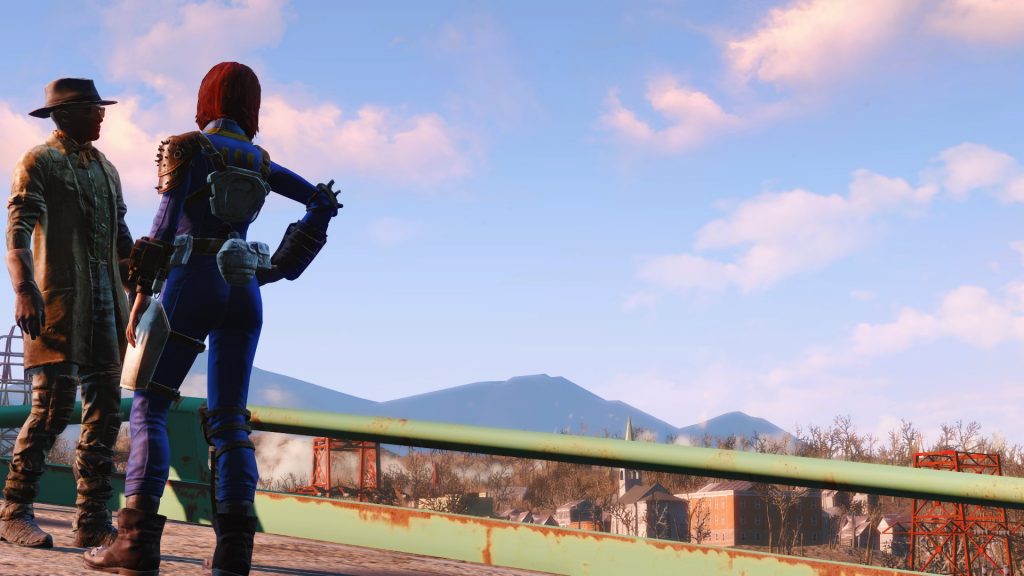
On Oct. 21, 2016, the Screen Actors Guild-American Federation of Television and Radio Artists, or SAG-AFTRA, called for a strike against a number of high-profile companies such as Electronic Arts, Insomniac Games, Take-Two Interactive Software, and more on behalf of voiceover artists active within the video game industry. It is now the second longest-running strike in the guild’s history, following a strike in 2000 levelled against the advertising industry that called for improved work compensation for commercial work in basic cable and internet services.
The current strike, which follows an “…unsuccessful 19 months of negotiations after the existing labor contract known as the Interactive Media Agreement expired in late 2014,” Iman Smith of NPR reports, features a slew of similar demands, with improved work conditions and residual payments at the center.
The existing terms dictate that voice actors within the guild receive a fixed rate of “…about $825 for a standard four-hour vocal session,” Smith reports. “So the voice actors are pushing for the idea of secondary compensation — a performance bonus every time a game sells 2 million copies or downloads, or reaches 2 million unique subscribers, with a cap at 8 million.”
Other areas the union calls for improvement in include increased transparency between the industry and voiceover talent and less strenuous working conditions.
“I was a main character in “Fallout 4,” a character by the name of Kellogg, and I never knew that I was working on “Fallout 4” throughout the year and a half that I did vocal recording for that game”, Keythe Farley, a voiceover artist who chairs the SAG-AFTRA negotiating committee, told Smith. “You show up [and] there’s a stack of scripts on a music stand with your lines only.”
Safety concerns, meanwhile, largely pertain to the vocal stress many voice actors contend with.
“I have friends who have had to have surgery because of the vocal stress they incurred in the session and they’ve been out of work for months,” voice actress Jennifer Hale told NPR, referencing some of the more demanding expectations of video game voiceover work—like the sound a voiceover artist may be required to approximate when “slashed in half by a sword” or “struck in the heart by a bullet.”
Scott Witlin, the lawyer representing the companies targeted by the strike, stated that to pay the voiceover artists working within the gaming industry under the newly proposed terms wouldn’t work because they “…represent less than one tenth of one percent of the work that goes into making a video game,” NPR reports.
“[Paying] them under a vastly different system than the people who do the 99.9 percent of the work [will] create far more problems for the video game companies,” Witlin said.
Expanding upon this sentiment, Emanuel Maiberg, in an article for Motherboard, states that “…the game developers, voice actors, and labor scholars who study the game industry” are less concerned with the voice actors currently on strike as they are with game developers “…and the lessons they might be learning from the organized workers” they see pushing for improved working conditions.
“Without a doubt, many game developers are paying attention to the SAG-AFTRA strike”, Kate Edwards, executive director of the International Game Developers Association, or IGDA, told Maiberg, adding that the strike had brought about a “…resurgence in discussions around unionization beyond voice actors”.
It stands to reason that the long-running strike would bring the issue of equity and representation within the industry to the forefront of the discussion.
“For many game devs, the strike has raised fresh questions about unionization in the game industry,” writes Alex Wawro, News Editor for Gamasutra.
During the ‘crunch’ time that frequently precedes a deadline, programmers working on a game may find themselves “…working every day, 15-hour days” Tommy Tallarico, composer and founder of the Game Audio Network guild, told Maiberg.
For many game developers, the culture and pressure of the workplace is one that necessitates these extended crunch-time periods, with IGDA’s 2015 Developer Satisfaction Survey revealing that “…62 percent [of respondents] indicated that their job involved crunch time; 58 percent said they were in crunch more than twice in the last two years; and 61 percent said that crunch time is expected at their workplace”, with an additional 44 percent of respondents who did not specifically cite experiencing periods of “crunch time” stating that “…their job did require periods of long hours, extended work hours or extended overtime that is not called ‘crunch.’”
“…and then a voice actor comes in and does a four-hour recording session and demands royalties on that game,” said Tallarico. “What if actors get royalties and the programmers don’t?”
The strike seems poised to pit not only game corporations and voice actors at odds, but developers, as well; according to chief SAG-AFTRA negotiator Ray Rodriguez, this shouldn’t be the case. Rather, he insists that the developers position may not be so different from the voice actors, and encourages unity in an effort to procure better working conditions from the corporations.
“The real question should be, why don’t the video game corporations want the developers to have better working conditions? To work less hours? To have work-life balance? To have better pay? To have job stability? We hope that developers recognize that and come together to protect their careers”, Rodriguez told reporter Ian Williams in an interview for Waypoint. “And when they do, we will stand with them and help them in any way we can.”




![Killed it. [And the variants “crush it”, “slay” as an exhortation]](https://pacsentinel.com/wp-content/uploads/2019/12/Siegel_MorePhrases03-370x247.jpg)